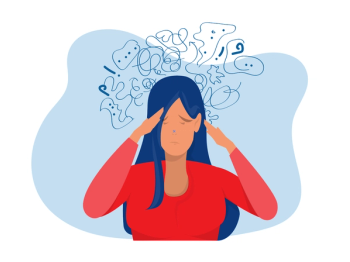
- Psychiatric Times Vol 28 No 6
- Volume 28
- Issue 6
Cognitive Impairments Found With Attention-Deficit/Hyperactivity Disorder
Over the past century, the syndrome currently referred to as ADHD has been conceptualized in relation to varying cognitive problems including attention, reward response, executive functioning, and other cognitive processes.
Over the past century, the syndrome currently referred to as attention-deficit/hyperactivity disorder (ADHD) has been conceptualized in relation to varying cognitive problems including attention, reward response, executive functioning, and other cognitive processes.1 More recently, it has become clear that whereas ADHD is associated at the group level with a range of cognitive impairments, no single cognitive dysfunction characterizes all children with ADHD.2,3 In other words, ADHD is not a one-size-fits-all phenomenon. Patients with this syndrome do not fit into any one category and present with widely differing co-occurring disorders-including varying cognitive profiles.
Thus, ADHD represents not a single disease entity but a heterogeneous group of patients who require differentiated analysis, assessment, and treatment. This article focuses on the cognitive presentation of children (and, to a lesser extent, adults) with ADHD.
ADHD subtypes
DSM-IV specifies that there are 3 subtypes of ADHD:
• Primarily inattentive
• Primarily hyperactive-impulsive
• Combined inattentive and hyperactive-impulsive
Much research has attempted to map particular cognitive problems to particular DSM-IV subtypes but, to date, there has been no consensus. Contemporary neuroscience has helped clarify that cognition and affect are closely related-cognitive computations depend heavily on emotional arousal and valence, just as affective response depends in part on cognitive
evaluation.4
The diagnosis of ADHD is not based on cognitive difficulties but rather on evaluation of hallmark behaviors using standardized, nationally validated rating scales as well as a structured clinical interview with the caregiver.5 Cognitive impairments constitute secondary features that often accompany the disorder and need to be considered as part of a comprehensive clinical formulation and multidisciplinary treatment plan. If a child’s cognitive profile is not considered, he or she may respond positively on behavioral ratings to standard treatment (eg, a psychostimulant medication), yet still fail to attain his best academic or social functioning ability because of cognitive impairment.
Cognitive problems and clinical options
The 10 well-established cognitive problems listed in
It is unknown whether any of the context-dependent cognitive problems are unique to ADHD. However, all appear to be at least partially specific to ADHD because they are not explained by co-occurring psychiatric, behavioral, or learning problems and, in most instances, they are more clearly associated with ADHD (larger effect sizes) than with other disorders.6 Thus, they are part of the established correlates of ADHD at the group level.
Intellectual functioning
As a group, children with ADHD tend to have a slightly lower IQ than comparison groups of children. (Note that if a child with ADHD has a very high IQ, consideration of intellectual needs remains important also.) Recognition of borderline IQ is essential for making plans to help the child achieve academic success. Medication may enhance the IQ score by 2 to 5 points.7 Formal IQ testing is particularly valuable in children with ADHD who are academically underachieving or for those with suspected learning disabilities.
Verbal domain learning disorders
Most children with ADHD underachieve academically; this is in part because of their poor attention and inability to focus on a task. Yet the chances that a child with ADHD has a formal learning disability is as high as 30%.8 In severely affected children, marked problems with auditory memory and learning accompany the learning disability. The combination of cognitive problems can make learning and succeeding extremely difficult for the child in an educational setting. Neuropsychological testing can identify the cognitive problems that lead to academic difficulties.
Standard educational interventions are available for children with problems in phonological decoding (a common source of reading disability or dyslexia).9 In addition, mnemonic strategies are under investigation and may be helpful in the classroom, the home, or through tutoring.10 Children with this profile may benefit from tutoring. Children with weakness in the verbal domain may also benefit from visual assists to learning (eg,pictures, diagrams, lists, maps). Adolescents and young adults may benefit from vocational guidance as well.
Nonverbal learning disorders
Questions remain about the validity of white matter, right hemisphere, or nonverbal learning disorders (NVLD). The NVLD construct provides working guidelines for neuropsychological evaluation and is quite valuable for clinical purposes.11,12 The construct suggests that neuropsychological evaluation will reveal that a subset of children with attention problems will exhibit a syndrome that includes difficulty in spatial processing, abstract concept formation, and nonverbal or visual reasoning. Informal observation or clinical interview may reveal poor social skills as well.
A referral for neuropsychological evaluation is indicated if the child with ADHD presents with difficulty in handwriting, mathematics, social skills, spatial skills, fine motor development, or sensory perception. Referral is also indicated when Asperger disorder is suspected.
A wide range of factors may contribute to an NVLD profile, including early prenatal alcohol exposure and a variety of neurological and medical conditions.12 The extent of the intervention protocol mandated in response to an NVLD finding directly depends on the extent of the syndrome. Many of these protocols are “face valid” interventions, but some have systematic empirical support and are increasingly disseminated in the educational literature.13
Developmental coordination disorder
Cognitive and motor development are related in important ways.14 The clinician must be alert to co-occurring motor dyscontrol or clumsiness in persons with ADHD.15,16 (As framed by Gillberg,16 the question is whether the child broke the lamp because of impulsivity or clumsiness?) Careful interviewing, observation, and formal evaluation of motor coordination confirm the determination. Referral for an occupational or physical therapy evaluation is indicated if there are marked motor coordination problems or suggestive symptoms (eg, notable or apparent motor or muscular weakness, difficulty with basic self care (such as shoe tying), or a history of delays in fine or gross motor skill development). Appropriate rehabilitation strategies may then be suggested.
Context-Dependent Cognitive Problems
The remaining 6 cognitive findings that are hallmark correlates of ADHD are context-dependent.2
Arousal and alertness
Several kinds of attention are normally developed or, at best, it is debatable whether they are deficits in ADHD.17,18 However, ADHD is associated with problems in alertness. Alertness-the ability to be vigilant and to sustain focus-is sometimes seen as related to tonic cortical arousal and slow-wave electroencephalographic signaling from scalp electrodes. At the extremes, alertness is defined by sleep or coma on the one hand and panic or rage on the other. Contrary to their initial appearance, children with ADHD tend to be underalert.19 Two classic, context-dependent cognitive findings exemplify difficulties in this domain (note that the empirical findings are interpreted in different ways by different observers).
The first is that in a “slow and careful” context (such as completing a careful search of an assignment to make sure all details were done) the person with ADHD is more likely to respond quickly and carelessly (the classic “impulsive” response style). Clinical assessment may reveal impulsivity that interferes with learning or achievement. Formal psychometric tests can measure this response pattern. The clinical presentation may reflect marked impulsivity and irritability, with a seemingly puzzling combination of overactivity and low energy.
The second is the counterintuitive converse of the first: in a “fast and accurate” context (such as taking a timed test, or processing information rapidly for a sport or hobby), responses are too slow and yet remain inaccurate (the “underaroused” hallmark). This may be noted in any number of speeded motor output tasks on psychometric testing.2
In addition to already recognized interventions such as psychostimulants, a range of behavioral interventions may be considered from the perspective of poor alertness (
There is evidence that children with ADHD may be more likely to have disturbed sleep (in some instances because of a poor bedtime routine), and that in children with poor sleep, improved sleep improves attention.20,21 Also, evidence indicates that physical exercise improves attentional alertness and other cognitive functions in adults.22 Although there are few experiments in children, child fitness is correlated with academic performance.23 Preliminary studies suggest that exercise may improve attention in children in the same way that it does in adults,24 however, the evidence is inconclusive in children with ADHD.25 Malnutrition clearly impairs attention as well as other functions, but it remains to be seen whether attention in children with ADHD can be improved with a better diet.26
Despite the lack of controlled outcome trials, the low risk of these interventions and the likelihood of benefit commends a basic “alertness hygiene” approach to maximize the chances of success. In addition, psychostimulant medication may directly target an alertness problem and may be well justified.
Temporal discounting, reward delay, and time estimation
The evaluation of potential rewards and the matching of consequences to behavior entail both affective response (spontaneous activation to a cue) and cognitive computations (magnitude, temporal properties) of the potential reward or consequence of an action. Effective learning as well as effective maximization of behavioral pay-off requires accurate evaluation of temporal and magnitude linkages. These evaluations happen continuously during learning and behavior. In ADHD, in the presence of cues for reward or incentive, immediate rewards are given disproportionate weight over larger but later rewards.27 That tendency remains difficult to evaluate with psychometric testing because most good measures (used in the research context) have not yet been associated with normative data.
In contexts in which time judgment is relevant to learning or decision making, temporal information processing is altered, with a tendency to overestimate even very short time intervals (a few hundred milliseconds to a few seconds).28 This probably represents a distinct cognitive finding from that involved in the evaluation of reward. Reliable decision points for use in formal clinical interventions have not been developed yet. However, a common sense strategy recognizes the child’s weakened ability to estimate time and suggests building into the behavioral plan reminders and warnings of impending transitions, deadlines, and time constraints.
Executive functioning
The most apparent cognitive problem-and in some views the cognitive hallmark of ADHD-is a weakness in executive functioning. Persons with ADHD may have difficulty in planning the steps involved, for example, in organizing a party or doing long division in the correct sequence. This may be a consequence of problems in working memory capacity, in handling interfering information, in integrating behavioral sequences, or in suppressing triggered responses in a fast decision-making context.2,6,29 The result is inaccurate and inefficient performance.6 Formal evaluation of these abilities is available with a range of validated neuropsychological measures.30
The literature on rehabilitation of executive problems in patients who have sustained a head injury has recently been applied to ADHD in adults.31 Interest has coalesced around educational and training interventions for young children.13,34Although the effectiveness of these interventions is still being evaluated, appropriate educational planning that recognizes an executive problem is probably essential to maximizing the child’s educational experience. With teenagers and adults, referral to occupational or rehabilitation services can be considered. The primary treating clinician must become a coordinator of services: he or she needs to provide appropriate referrals for evaluation, education, and rehabilitation.
Conclusion
Formal cluster analyses of ADHD cognitive profiles are too few and inconclusive to provide an authoritative breakdown of ADHD types, a frequency of various combinations of these problems, or odds ratios of their occurrence. Yet, the clinical problems suggested here can serve as a starting point for clinical reflection.
Correctly identifying and formulating the cognitive impairments requires a careful history, observation, and formal psychometric testing of cognitive operations. Cognitive problems cannot be reliably evaluated without formal neuropsychological testing because many present with similar “surface” symptoms. Therefore, psychological testing is indicated in many persons with ADHD-not to assist with the diagnosis of ADHD but to correctly profile the cognitive and learning needs of the patient and enable adequate rehabilitation and behavioral and educational planning.
References:
References
1. Barkley RA. Behavioral inhibition, sustained attention, and executive functions: constructing a unifying theory of ADHD. Psychol Bull.1997;121:65-94.
2. Nigg JT. Neuropsychological theory and findings in attention-deficit/hyperactivity disorder: the state of the field and salient challenges for the coming decade. Biol Psychiatry. 2005;57:1424-1435.
3. Nigg JT, Willcutt EG, Doyle AE, Sonuga-Barke EJ. Causal heterogeneity in attention-deficit/hyperactivity disorder: do we need neuropsychologically impaired subtypes? Biol Psychiatry. 2005;57:1224-1230.
4. Nigg JT, Casey BJ. An integrative theory of attention-deficit/hyperactivity disorder based on the cognitive and affective neurosciences. Dev Psychopathol. 2005;17:785-806.
5. Pelham WE Jr, Fabiano GA. Evidence-based psychosocial treatments for attention-deficit/hyperactivity disorder. J Clin Child Adolesc Psychol. 2008;37: 184-214.
6. Willcutt E, Sonuga-Barke E, Nigg JT, Sergeant JA. Neuropsychology of childhood disorders. In: Banaschewski T, Rohde LA, eds. Biological Child Psychiatry: Recent Trends and Developments. Advances in Biological Psychiatry, Vol 24. Basel: Karger; 2008:195-226.
7. Jepsen JR, Fagerlund B, Mortensen EL. Do attention deficits influence IQ assessment in children and adolescents with ADHD? J Atten Disord. 2008 Sep 24; [Epub ahead of print].
8. Hinshaw SP. Externalizing behavior problems and academic underachievement in childhood and adolescence: causal relationships and underlying mechanisms. Psychol Bull. 1992;111:127-155.
9. Rayner K, Foorman BR, Perfetti CA, et al. How psychological science informs the teaching of reading. Psychol Sci. 2001;2(suppl 2):31-74.
10. Eskritt M, McLeod K. Children’s note taking as a mnemonic tool. J Exp Child Psychol. 2008;101:52-74.
11. Drummond CR, Ahmad SA, Rourke BP. Rules for the classification of younger children with nonverbal learning disabilities and basic phonological processing disabilities. Arch Clin Neuropsychol. 2005;20:171-182.
12. Rourke BP, Ahmad SA, Collins DW, et al. Child clinical/pediatric neuropsychology: some recent advances. Annu Rev Psychol. 2002;53:309-339.
13. Meltzer L. Executive Function in Education: From Theory to Practice. New York: Guilford Press; 2007.
14. Diamond A. Close interrelation of motor development and cognitive development and of the cerebellum and prefrontal cortex. Child Dev. 2000;71:44-56.
15. Eliasson AC, Rösblad B, Forssberg H. Disturbances in programming goal-directed arm movements in children with ADHD. Dev Med Child Neurol. 2004;46: 19-27.
16. Gillberg C. Deficits in attention, motor control, and perception: a brief review. Arch Dis Child.2003;88: 904-910.
17. Huang-Pollock CL, Nigg JT. Searching for the attention deficit in attention deficit hyperactivity disorder: the case of visuospatial orienting. Clin Psychol Rev. 2003;23:801-830.
18. Huang-Pollock CL, Nigg JT, Carr TH. Deficient attention is hard to find: applying the perceptual load model of selective attention to attention deficit hyperactivity disorder subtypes. J Child Psychol Psychiatry. 2005;46:1211-1218.
19. Barry RJ, Clarke AR, Johnstone SJ. A review of electrophysiology in attention-deficit/hyperactivity disorder, I: qualitative and quantitative electroencephalography. Clin Neurophysiol. 2003;114:171-183.
20. Walters AS, Silvestri R, Zucconi M, et al. Review of the possible relationship and hypothetical links between attention deficit hyperactivity disorder (ADHD) and the simple sleep related movement disorders, parasomnias, hypersomnias, and circadian rhythm disorders. J Clin Sleep Med. 2008;15:591-600.
21. Chervin RD, Ruzicka DL, Giordani BJ, et al. Sleep disordered breathing, behavior, and cognition in children before and after adenotonsillectomy. Pediatrics. 2006;117:e769-e778.
22. Tomporowski PD. Effects of acute bouts of exercise on cognition. Acta Psychol (Amst). 2003;112: 297-324.
23. Castelli DM, Hillman CH, Buck SM, Erwin HE. Physical fitness and academic achievement in third- and fifth-grade students. J Sport Exerc Psychol. 2007;29:239-252.
24. Budde H, Voelcker-Rehage C, Pietrabyk-Kendziorra S, et al. Acute coordinative exercise improves attentional performance in adolescents. Neurosci Lett. 2008;441:219-223.
25. Wigal SB, Nemet D, Swanson JM, et al. Catecholamine response to exercise in children with attention deficit hyperactivity disorder. Pediatr Res. 2003;53:756-761.
26. Fanjiang G, Kleinman RE. Nutrition and performance in children. Curr Opin Clin Nutr Metab Care. 2007;10:342-347.
27. Luman M, Oosterlaan J, Sergeant JA. The impact of reinforcement contingencies on AD/HD: a review and theoretical appraisal [published correction appears in Clin Psychol Rev. 2005;25:533]. Clin Psychol Rev. 2005;25:183-213.
28. Toplak ME, Rucklidge JJ, Hetherington R, et al. Time perception deficits in attention-deficit/hyperactivity disorder and comorbid reading difficulties in child and adolescent samples. J Child Psychol Psychiatry. 2003;44:888-903.
29. Martinussen R, Hayden J, Hogg-Johnson S, Tannock R. A meta-analysis of working memory impairments in children with attention-deficit/hyperactivity disorder. J Am Acad Child Adolesc Psychiatry. 2005; 44:377-384.
30. Strauss E, Sherman EMS, Spreen O. A Compendium of Neuropsychological Tests: Administration, Norms, Commentary. 3rd ed. New York: Oxford University Press; 2006.
31. Sohlberg MM, Mateer CA. Improving attention and managing attentional problems: adapting rehabilitation techniques to adults with ADHD. In: Wasserstein J, Wolf L, LeFever FF, eds. Adult Attention Deficit Disorder: Brain Mechanisms and Life Outcomes. Annals of the New York Academy of Sciences, Vol 931. New York: New York Academy of Sciences; 2001:359-375.
32. Thorell LB, Lindqvist S, Bergman Nutley S, et al. Training and transfer effects of executive functions in preschool children. Dev Sci. 2009;12:106-113.
33. Iglowstein I, Jenni OG, Molinari L, Largo RH. Sleep duration from infancy to adolescence: reference values and generational trends. Pediatrics. 2003;111: 302-307.
34. Gidding SS, Dennison BA, Birch LL, et al. Dietary recommendations for children and adolescents: a guide for practitioners: consensus statement from the American Heart Association [published correction appears in Circulation.2005;112:2375]. Circulation. 2005;112:2061-2075.
35. KidsHealth.
Evidence-Based References
Chervin RD, Ruzicka DL, Giordani BJ, et al. Sleep disordered breathing, behavior, and cognition in children before and after adenotonsillectomy. Pediatrics. 2006;117:e769-e778.
Pelham WE Jr, Fabiano GA. Evidence-based psychosocial treatments for attention-deficit/hyperactivity disorder. J Clin Child Adolesc Psychol. 2008;37: 184-214.
Articles in this issue
over 14 years ago
Feeling Socially Safeover 14 years ago
Avoiding SRI Discontinuation Syndromeover 14 years ago
Drs McGlashan and Woods Respond to Dr Feinbergover 14 years ago
Obama Drug Misuse Strategy Targets Physician Educationover 14 years ago
Alfred M. Freedman, MD, 1917-2011over 14 years ago
Is It Treatment-Refractory Schizophrenia . . . And if It Is?over 14 years ago
Are We Training Psychiatrists to Provide Only Medication Management?over 14 years ago
Effects of Early Parental DepressionNewsletter
Receive trusted psychiatric news, expert analysis, and clinical insights — subscribe today to support your practice and your patients.

















